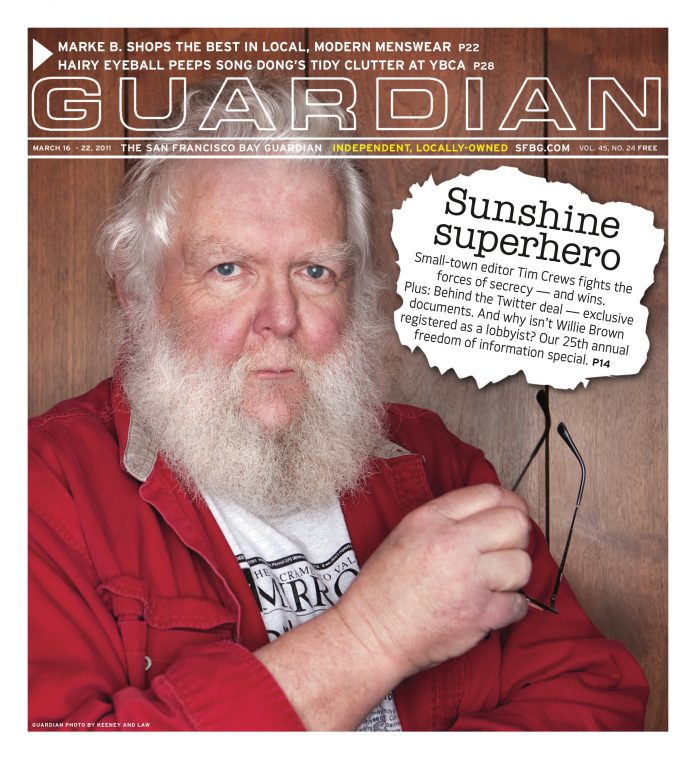caitlin@sfbg.com
CULTURE In the Mission there are few things more — and less — sacred than a mural. Every day in the neighborhood a communion is performed: new street art is produced, and in exchange, other street art is mangled, marred by tags scrawled by unimpressed or jealous (depends on who you ask) hands. But some wall pieces in this storied land of concrete canvases are holy in more than just the figurative sense. Two neighborhood mural projects in particular fit this frame, one blessed by priests and one possessing clues about the earliest days of the Mission Dolores.
Caledonia Alley runs alongside St. John the Evangelist’s Episcopal Church. Jesus looks down on the narrow street, which was once so thoroughly covered in needles that Elaine Lew, who was born and raised in a house on Caledonia, says, “You couldn’t drive your car down it because you’d pop your tires.” Every Sunday, families lined up for the free food the church distributed, sharing the space with people openly selling and using drugs.
But since Jesus came to the alley, things have been different. Street artist Dan Plasma happened upon Caledonia looking for fresh wall space to paint, and proposed to the church that he cover their heavily-tagged alley wall with something space-specific. St. John’s acquiesced, so Plasma and his friends, respected artists Mike Giant and Mark Bode, went to work on a spray paint tableau of the crucifixion, with St. John and other biblical figures in supporting roles.
“It really made a big difference in the alley,” says Lew, who notes that the blatant drug activity has subsided in the year since the crew completed the piece. The church recognized the change, and the rector let Plasma know that it would be officially blessing the mural in a ceremony. “I called up Mark and Mike and told them, ‘It’s going to get sprinkled with holy water. We gotta put on some clean shirts,’ ” says Plasma. A year later, the wall is still utterly free of the tags that go on so many other works.
Funds allowing, a miracle of a different sort will soon be watching over the neighborhood’s only weekly farmers market. Artist Ben Wood has made a habit of finding our city’s little-known historical perspectives and presenting them to the San Francisco of today. In 2004, he spent the Fourth of July projecting images of the Ohlone onto Coit Tower and Andrew Galvan, Mission Dolores’ curator — and direct descendent of Ohlone who converted at the church — told Wood there was an original Ohlone mural hidden behind the mission’s central reredos, or altar.
“It’s been hidden for 200 years,” Wood says in a phone interview. “The possibility of recreating the mural for the public — it would allow people to ask questions about life back then.” He and a Presidio historian set to work documenting the piece, dropping a camera into the crawl space between mural and altar and eventually coming up with a composite image of a spiraling, curving design of purple lines and dagger-pierced hearts they hope to recreate on a wall of the historic Mission Market that abuts the relatively new, open-air Mission Community Market.
“The mural is really telling about the tradition of being a muralist in San Francisco,” says [CORRECTION: Jet Martinez clarifies that this is a misquote. The Guardian regrets the error.]
Jet Martinez, street artist and central figure in the Clarion Alley collective, was selected by Wood to work on the piece because of his mastery of intricate patterns in past murals of Oaxacan embroidery and prehistoric plant life. Their team created a Kickstarter account (www.kickstarter.com/profile/missiondoloresmural) for the project and hope to collect the majority of the $8,000 needed for the work by the end of the month. If they succeed, it will add another dimension to the canonization of street art in one of muralismo‘s most well-known neighborhood of galleries.

